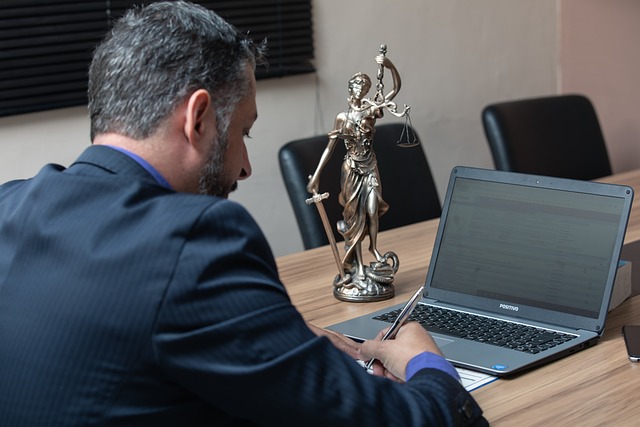The fight against securities scams presents unique challenges within the criminal justice system, demanding a deep understanding of the "Understanding Burden of Proof in Criminal Cases." With high-stakes financial losses and complex digital trails, prosecutors must secure convictions beyond a reasonable doubt. Legal professionals navigate this intricate landscape, balancing victim and accused rights while exposing manipulative schemes extending to philanthropy and politics. International cooperation and mastery of burden of proof are crucial for effective prosecution. The Sarbanes-Oxley Act (SOX) and SEC regulations form a robust framework, reinforced by strict penalties, to safeguard investors and uphold market integrity.
In the dynamic landscape of global finance, securities scams pose a significant threat to investors worldwide. This article delves into the intricate world of financial fraud, focusing on the legal aspects that underpin these illicit activities. We explore the legal framework, specifically examining jurisdiction and regulatory bodies, as well as the crucial concept of Understanding Burden of Proof in Criminal Cases. By dissecting common scams like pump-and-dump schemes and Ponzi plans, we equip readers with knowledge to recognize red flags and safeguard their investments.
- The Legal Landscape of Securities Scams
- – Understanding the jurisdiction and regulatory bodies involved in securities fraud cases.
- – Overview of laws and acts pertaining to securities scams (e.g., Sarbanes-Oxley Act, SEC regulations).
The Legal Landscape of Securities Scams
The legal landscape surrounding securities scams is complex, with a unique set of challenges compared to other criminal activities. When it comes to prosecuting these cases, understanding the burden of proof is paramount. In criminal law, prosecutors must present compelling evidence beyond a reasonable doubt to secure convictions. This principle is especially critical in high-stakes cases involving substantial financial losses and vulnerable corporate and individual clients. The complexity often lies in gathering and interpreting data, as securities fraud can leave intricate trails of digital transactions and manipulative schemes.
Legal professionals play a pivotal role in navigating this terrain, ensuring that the rights of both victims and accused are protected. In addition to financial repercussions, these scams often have far-reaching implications for philanthropic and political communities, further complicating the legal landscape. As such, specialized knowledge and a deep understanding of securities regulations are essential tools in exposing and prosecuting these fraudulent activities.
– Understanding the jurisdiction and regulatory bodies involved in securities fraud cases.
In securities fraud cases, understanding the jurisdiction and regulatory bodies involved is crucial for identifying and prosecuting wrongdoers effectively. Each country has its own set of laws and agencies tasked with enforcing them, such as the Securities and Exchange Commission (SEC) in the United States or the Financial Conduct Authority (FCA) in the UK. These regulatory bodies work to maintain fairness, order, and efficiency in financial markets by investigating potential frauds and taking appropriate legal action. The jurisdiction over these cases can span across borders, especially in an increasingly globalized financial landscape, requiring international cooperation for successful prosecution.
The understanding of the burden of proof in criminal cases is also key. Prosecutors must demonstrate beyond a reasonable doubt that securities fraud has occurred and that the accused individuals or entities are directly responsible. This means presenting strong, compelling evidence to a jury in cases that often involve complex financial transactions and intricate schemes. Achieving extraordinary results in these trials requires meticulous preparation, expert testimony, and a deep understanding of both the law and the specific circumstances surrounding the alleged white-collar and economic crimes.
– Overview of laws and acts pertaining to securities scams (e.g., Sarbanes-Oxley Act, SEC regulations).
In the realm of securities scams, a robust legal framework safeguards investors and ensures market integrity. The Sarbanes-Oxley Act (SOX) stands as a cornerstone legislation, mandating stringent corporate disclosures and accountability for financial reporting. Alongside SOX, the Securities and Exchange Commission (SEC) enforces regulations that aim to prevent fraudulent activities. These laws carry significant weight, especially in high-stakes cases, by imposing strict penalties on wrongdoers and providing investors with legal recourse. Understanding the burden of proof in criminal cases is crucial; prosecutors must demonstrate beyond a reasonable doubt the existence of securities scams, ensuring fair trials and achieving extraordinary results for both justice and investor protection. The interplay between these laws and regulations creates a formidable barrier against fraudulent practices, fostering a more transparent and trustworthy financial landscape.
In navigating the complex world of securities scams, understanding the legal landscape is paramount. Regulatory bodies and jurisdiction play crucial roles in fighting fraud, with laws like the Sarbanes-Oxley Act and SEC regulations serving as powerful tools. The burden of proof in criminal cases is a critical aspect, ensuring that accusations are rigorously examined. By recognizing the signs and staying informed, investors can protect themselves from these deceptive schemes, fostering a more transparent and secure financial environment.






